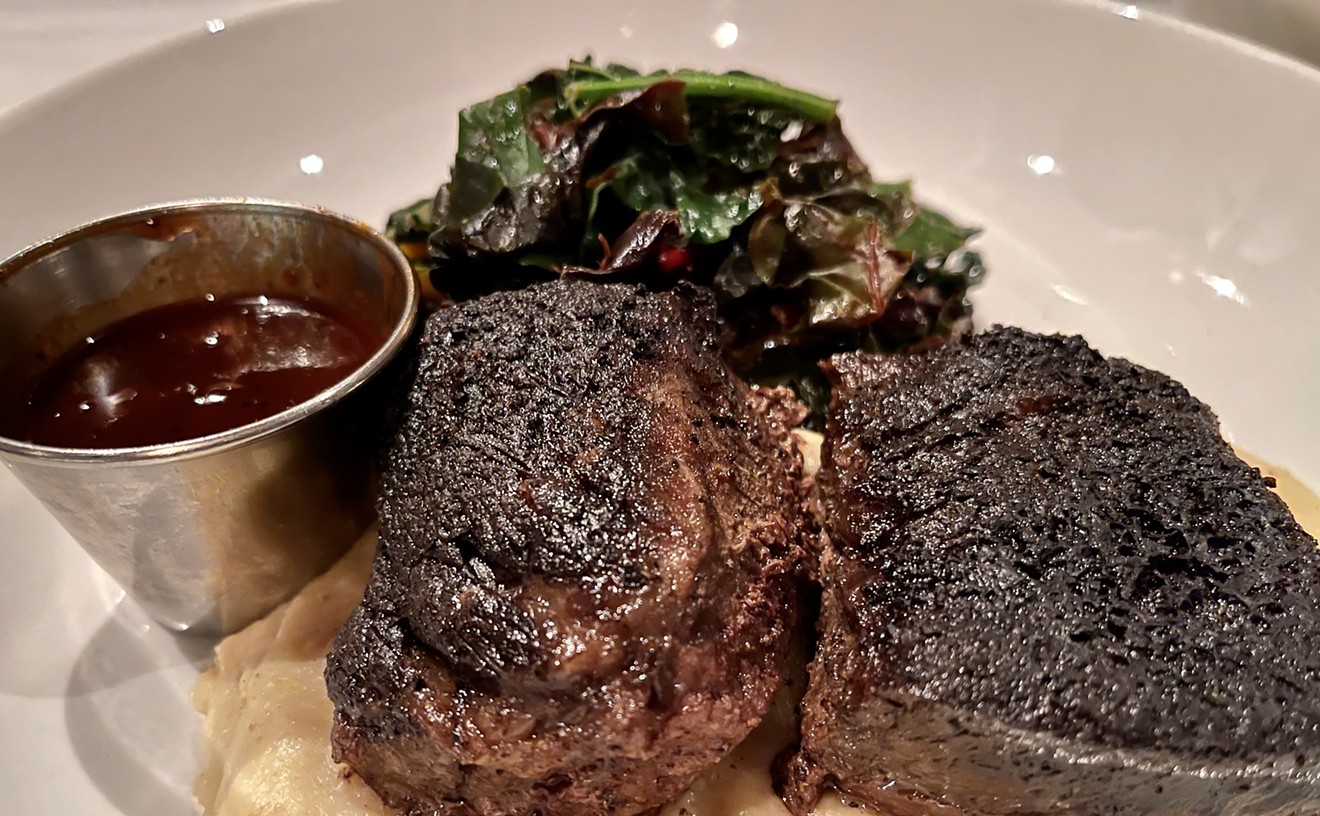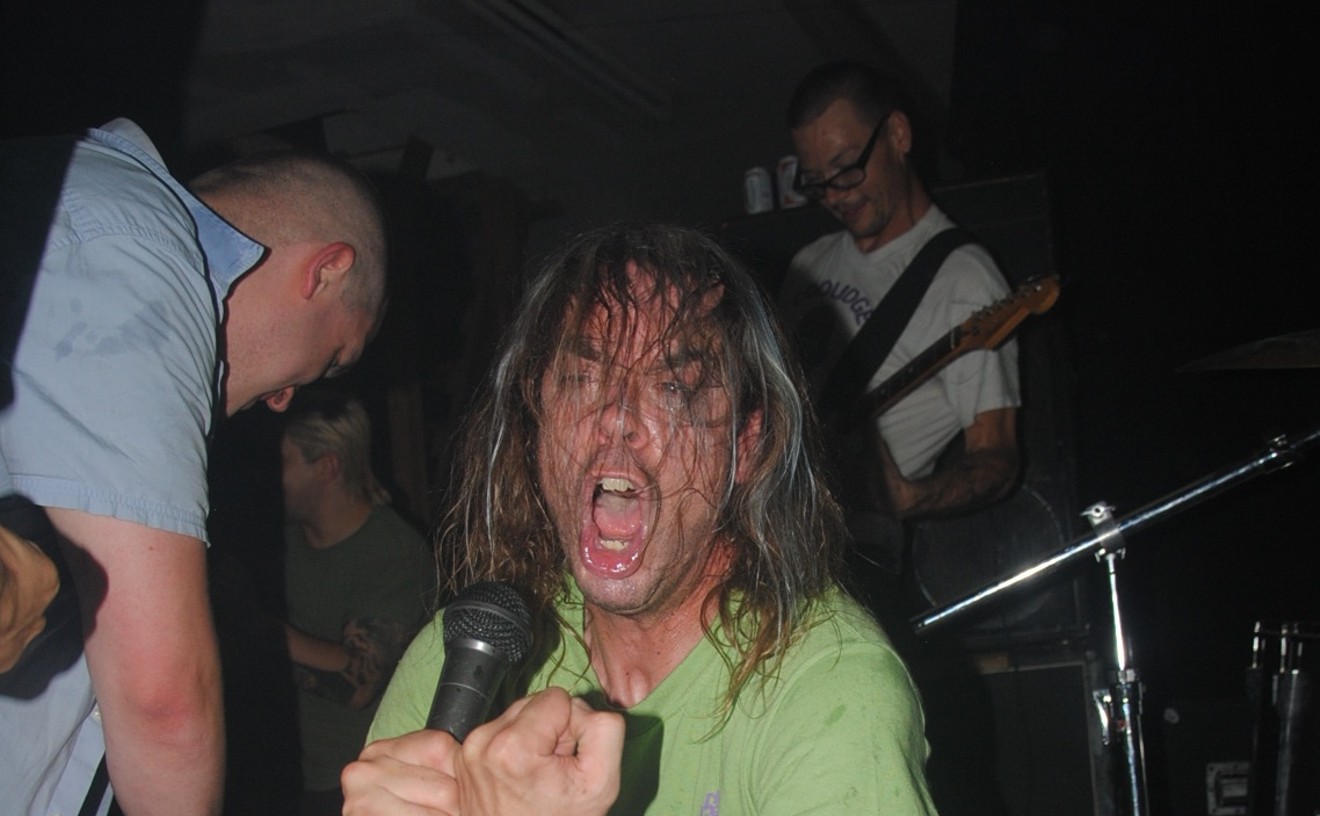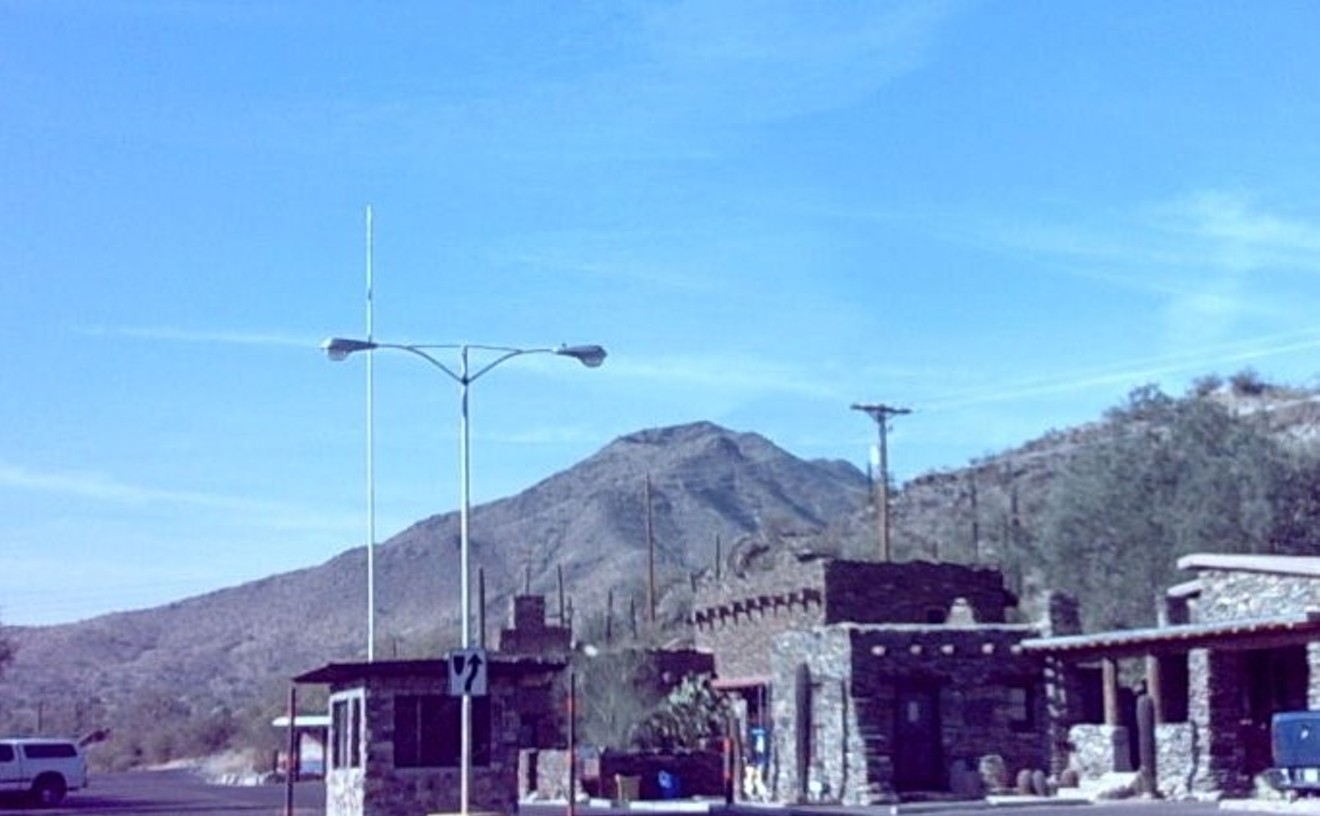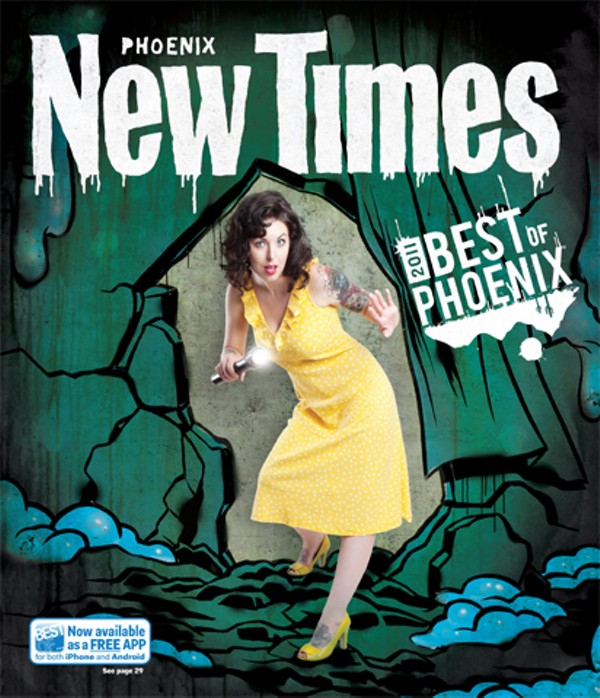Best Sports Bar, Downtown Phoenix: Alice Cooper's Town
Best Gay Bar: Amsterdam
Best Lesbian Bar: Amsterdam
Best Martini: AZ 88
Best Bookstore: Barnes & Noble
Best TV Newscaster: Beverly Kidd
Best Pop-Up Restaurant: Black Chile Mexican Grill
Best Downtown Lunch: Black Chile Mexican Grill
Best Take a Foodie: Black Chile Mexican Grill
Best Happy Hour, Central Phoenix: Black Chile Mexican Grill
Best Happy Hour, Downtown Phoenix: Black Chile Mexican Grill
Best Neighborhood Bar, Central Phoenix: Black Chile Mexican Grill
Best Neighborhood Bar, Downtown Phoenix: Black Chile Mexican Grill
Best Upscale Mexican Restaurant: Black Chile Mexican Grill
Best Margarita: Black Chile Mexican Grill
Best Vintage Clothing: Buffalo Exchange
Best Spa: Camelback Inn
Best Hiking Trail: Camelback Mountain
Best Independent Film Theater: Camelview 5
Best Neighborhood Mexican Restaurant, South Phoenix: Carolina's
Best Coffee House, Tempe: Cartel Coffee Lab
Best Neighborhood Bar, Tempe: Casey Moore's Oyster House
Best Venue to See National Acts: Celebrity Theatre
Best Ice Cream: Cold Stone Creamery
Best Dive Bar: The Coach House
Best Music Festival: Country Thunder
Best Vietnamese Restaurant: Cyclo
Best Italian Deli: DeFalco's Italian Eatery
Best Indian Restaurant: Delhi Palace
Best Latin DJ: DJ Kyko
Best Hip-Hop DJ: DJ Madd Rich
Best Steak House Durant's
Best Place for a Twilight Drink: Elements at Sanctuary
Best First Friday Hangout: Firehouse
Best New Restaurant: Firehouse
Best Happy Hour, Scottsdale: Firehouse
Best Sports Bar, Scottsdale: Firehouse
Best New Nightclub: Firehouse
Best Dance Floor: Firehouse
Best Weekly Dance Night: Firehouse
Best Neighborhood Bar, Scottsdale: Firehouse
Best Place to Find a One-Night Stand: Firehouse
Best After-Hours Scottsdale: Firehouse
Best Place to Be Seen: Firehouse
Best Arts Festival: First Friday
Best Gastropub: Four Peaks Brewing Company
Best Happy Hour, Tempe: Four Peaks Brewing Company
Best Sports Bar, Tempe: Four Peaks Brewing Company
Best Brewery: Four Peaks Brewing Company
Best Local Beer: Four Peaks Brewing Company
Best Politician: Gabrielle Giffords
Best Sports Bar, South Phoenix: Gallagher's
Best English Pub: George & Dragon
Best Sunday Brunch: The Good Egg
Best Antiques on a Budget: Goodwill
Best Comic Book Shop: Gotham City Comics
Best Happy Hour, North Phoenix: Half Moon Sports Grill
Best German Restaurant: Haus Murphy's
Best Art Supply Store: Hobby Lobby
Best Barbecue Restaurant: Honey Bear's
Best Morning Radio Show: JohnJay & Rick KISS 104.7
Best Alternative/Rock Radio Station: KEXX 103.9
Best Hip-Hop Radio Station: KISS 104.7 FM
Best Country Radio Station: KMLE 107.9
Best Happy Hour, Southeast Phoenix: Kona Grill
Best News Radio Station: KTAR 92.3
Best Jazz & Blues Band: KYOT 95.5 FM
Best Sangria: La Grande Orange
Best Graffiti Artist: Lindsay Monti
Best Neighborhood, Mexican Restaurant,Scottsdale: Los Olivos
Best Vegan Restaurant: Loving Hut
Best Coffee House, Downtown Phoenix: Lux
Best Neighborhood Mexican Restaurant,Tempe: Macayo's
Best Venue for Local Acts: Marquee Theatre
Best Hangover Breakfast: Matt's Big Breakfast
Best Pool Hall: Mill Cue Club
Best Wings: Native New Yorker
Best Sports Bar, Southeast Valley: Native New Yorker
Best Slice of Pizza: NYPD Pizza
Best Italian Restaurant: Oregano's
Best Mural: Oregano's
Best Chinese Restaurant: P.F. Chang's
Best Restaurant for Kids: Peter Piper's Pizza
Best Pet Groomer: PetSmart
Best Hotel Pool: The Phoenician
Best Way to be Gluten-Free: Picazzo's Organic Italian Kitchen
Best Vegetarian Restaurant: Pita Jungle
Best Mediterranean Restaurant: Pita Jungle
Best Gourmet Pizza: Pizzeria Bianco
Best Place for a First Date: Postino Winecafe
Best Wine Bar: Postino Winecafe
Best Japanese Restaurant: RA Sushi
Best Blues Club: The Rhythm Room
Best Irish Pub: Rosie McCaffney's
Best View: Rustler's Rooste
Best Seafood: The Salt Cellar
Best Neighborhood Bar, Southeast Valley: SanTan Brewing Company
Best Sports Bar, North Phoenix: Santisi Brothers
Best Sports Bar, West Valley: Santisi Brothers
Best Specialty Cocktail: Santisi Brothers
Best Neighborhood Bar, North Phoenix: Santisi Brothers
Best Neighborhood Bar, West Valley: Santisi Brothers
Best Culinary Festival: Scottsdale Culinary Festival
Best Mall: Scottsdale Fashion Square
Best Latin Night: Sky Lounge
Best Hamburger: Smashburger
Best French Restaurant: Sophie's Bistro
Best Cupcakes: Sprinkles
Best Health Food Store: Sprouts
Best Coffee House, South Phoenix: Starbucks
Best Coffee House, North Phoenix: Starbucks
Best Coffee House, Central Phoenix: Starbucks
Best Coffee House, West Valley: Starbucks
Best Coffee House, Southeast Valley: Starbucks
Best Coffee House, Scottsdale: Starbucks
Best Sushi: Stingray Sushi
Best Casino: Talking Stick Resort
Best Bakery: Tammie Coe Cakes
Best Hot Dog: Ted's Hot Dogs
Best Place to See a Comedy Show: Tempe Improv
Best Country and Western Nightspot: Toby Keith's I Love This Bar & Grill
Best Place to Buy Wine by the Bottle: Total Wine & More
Best Golf Course: Troon North
Best Neighborhood, Mexican Restaurant, North Phoenix: Valle Luna
Best Neighborhood, Mexican Restaurant, West Valley: Valle Luna
Best Neighborhood, Mexican Restaurant, Southeast Valley: Valle Luna
Best Place to take a Scenester: The Vig
Best Place to Be Seen: W Hotel Scottsdale
Best Local Band: Whiskey Six
Best Thai Restaurant: Wild Thaiger
Best CD Store: Zia Record Exchange
Best Happy Hour, South Phoenix: Zipps Sports Grill
Best Happy Hour, West Valley: Zipps Sports Grill
Best Sports Bar, Central Phoenix: Zipps Sports Grill
Best Neighborhood Bar, South Phoenix: Zipps Sports Grill









